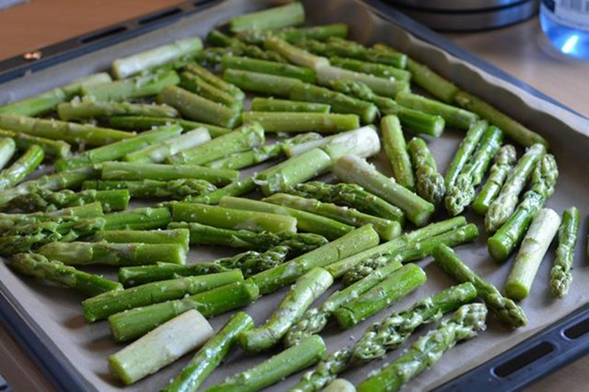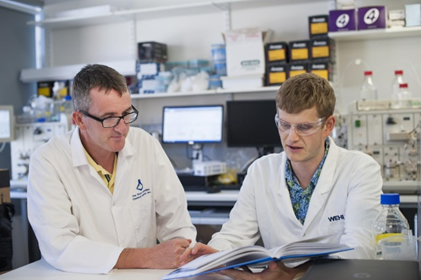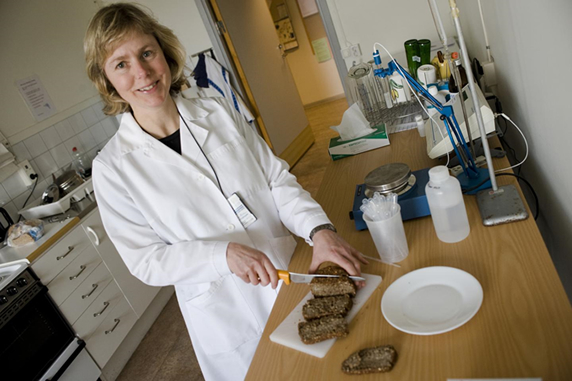Posted on The Japan News by The Yomiuri Shimbun on January 26, 2016
http://the-japan-news.com/news/article/0002688344
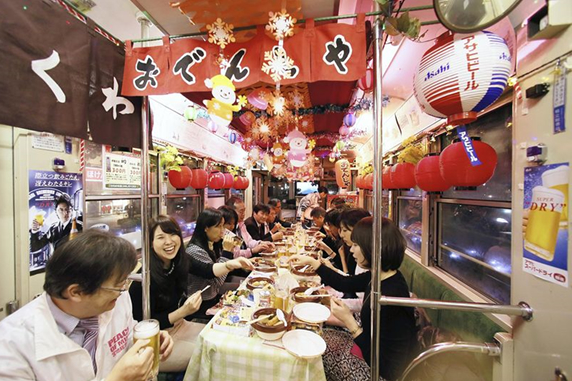
The Yomiuri Shimbun
While having oden and drinks, customers enjoy a ride on the Odensha special streetcar operated by Toyohashi Rail Road Co. in Toyohashi, Aichi Prefecture. Rail employees decorated the inside with red lanterns, a noren shop curtain and other ornaments.
By Ryuzo Suzuki / Yomiuri Shimbun PhotographerTOYOHASHI, Aichi — Around the time when red lanterns long associated with drinking establishments glow at dusk, Toyohashi Rail Road Co. runs a special streetcar from Toyohashi Station in Aichi Prefecture. It’s a moving oden stall, aboard which passengers can enjoy oden (a hodgepodge of ingredients including fish cakes, eggs and vegetables stewed in broth) with drinks, so the streetcar is called Odensha, a pun on the word for the winter delicacy and densha (train).
The streetcar runs daily from November through February, except for the New Year’s holidays. About 150 services, including those in daytime, are offered for its ninth season, but the Odensha has now become so popular that on the first day reservations were accepted almost all seats were booked by not just customers living in the prefecture, but also those outside.
 The Yomiuri Shimbun
The Yomiuri Shimbun
Vehicles wait for the Odensha as it turns at a crossing. The streetcar runs at a slow speed to prevent oden soup and drinks from spilling.

The Yomiuri Shimbun
A handmade paper lantern is hung at the rear window of the Odensha as a marker for the tram, which is called a hitotsume (one-eye) car as it has only one light on each end.
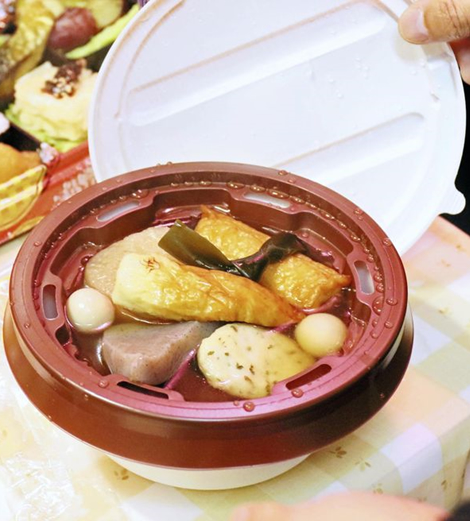 The Yomiuri Shimbun
The Yomiuri Shimbun
Oden served on the Odensha is now prepared exclusively for the service by a local fish cake manufacturer. Ingredients include chikuwa tube-type fish cakes, a local specialty, and quail eggs, as Toyohashi serves as the nation’s top producer.
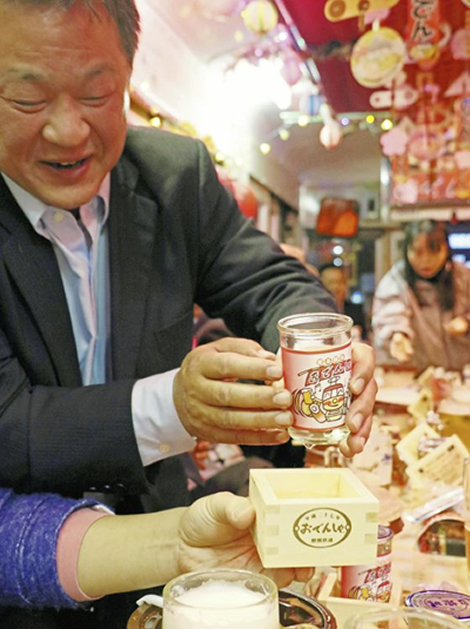 The Yomiuri Shimbun
The Yomiuri Shimbun
Local sake in a cup and a masu wooden sake drinking vessel are offered as souvenirs to passengers. The cup’s label features the Odensha character, with the design on the masu changing every season.
Up to 30 people can board per run, which starts from and returns to Toyohashi Station, traveling on a five-kilometer route each way. The journey takes about 80 minutes, including a short break along the way.
A special feature of the train is the handmade nature of the operation, with the involvement of railroad employees in the Odensha. When the service was inaugurated, for example, the staff bought all kinds of packaged retort oden products available at supermarkets to compare them before deciding which to offer onboard the streetcar.
The Odensha’s oden is served in a container that can warm the contents through a chemical reaction when an accompanying string is pulled. Employees have decided to use the container so that customers can enjoy hot food.
In addition, the Odensha has already been registered as a trademark to prevent the name from being used elsewhere.
The streetcar used for the special service was manufactured in 1955. The railroad company decorated the single car with illustrations of an Odensha character and various oden ingredients on its body, while red lanterns and a noren shop curtain are hung inside. The company’s female bus tour guides wait on customers, while ready-made long dining tables that can be brought into the car from its entrances are used.
Employees remove these decorations when the Odensha season is over to return the car as it originally was.
Toyohashi Rail Road started to offer streetcar services in 1925, which served as a main means of transportation for the city over the decades. However, the annual number of passengers dropped from 9.57 million in fiscal 1963 to 2.6 million in fiscal 2003, mainly due to the increased use of automobiles.
With an aim to boost demand among people who do not regularly use the streetcar, the operator first offered a “beer streetcar” service in the summer, which proved to be a hit. The company then started the Odensha in 2007 as a winter treat.
Including this season, 24,000 customers will have enjoyed the Odensha service since it was inaugurated. The Odensha also has helped increase the number of customers for the beer streetcar, according to the operator.
The Odensha is the brainchild of Masahiro Toda, now a deputy manager of the company’s general affairs department.
“We make almost no profit [from the Odensha],” he said. “However, it is now regarded as one of the winter attractions in Toyohashi, having become well-known nationwide.”
Toyohashi Rail Road has also found the number of streetcar users recovering, with the figure exceeding 3 million in the fiscal year ended March 2015.
Hiroshi Miyachi, who organized a New Year’s party aboard the Odensha on a recent evening, said, “It was quite hard to make a reservation” because he, along with five others, spent 40 minutes trying to get through to the company on the phone.
Miyachi, who has ridden the beer streetcar and the Odensha six times put together, added: “We can feel closer together in a narrow space like this, while eating tasty oden at the same time

